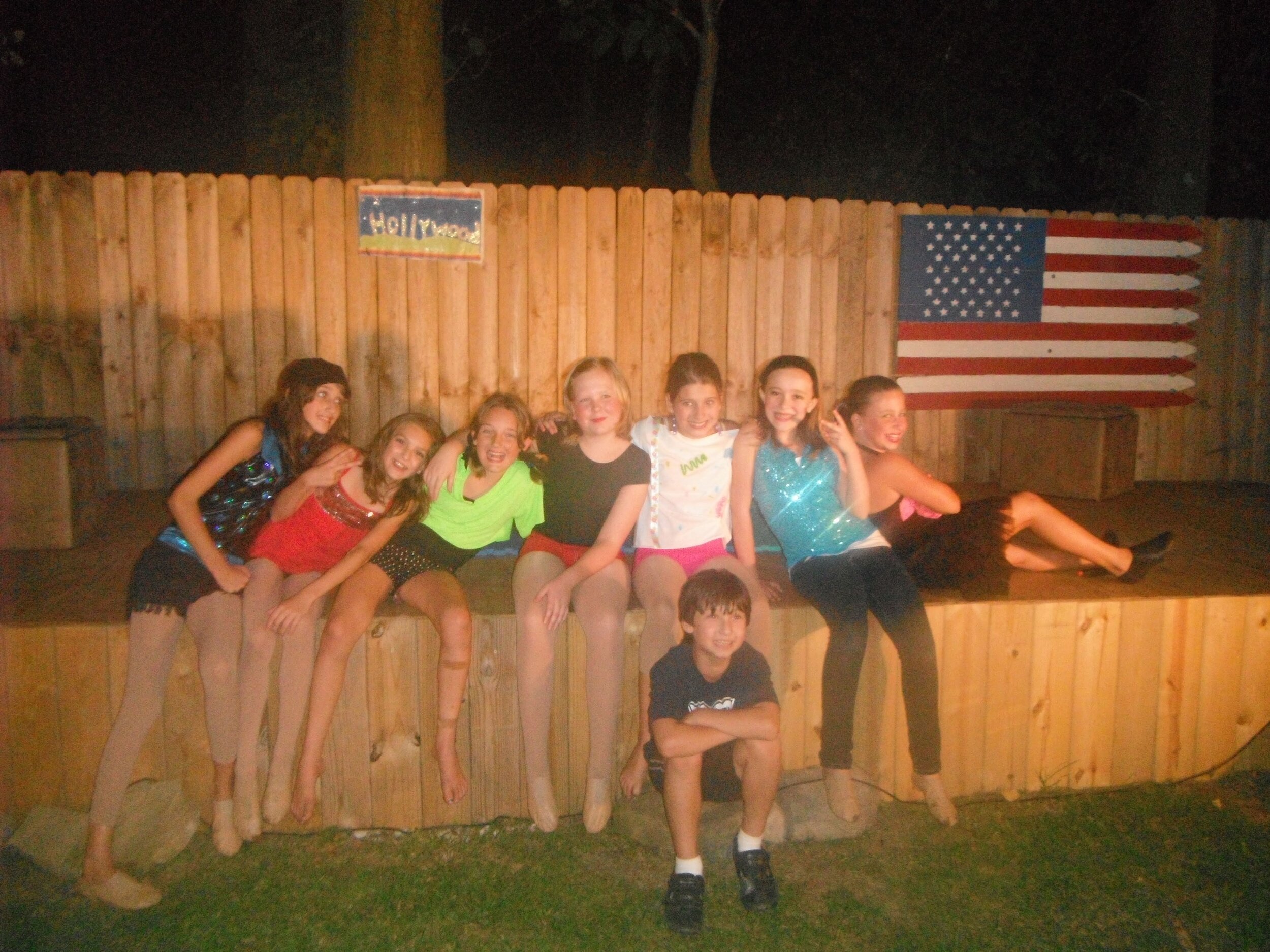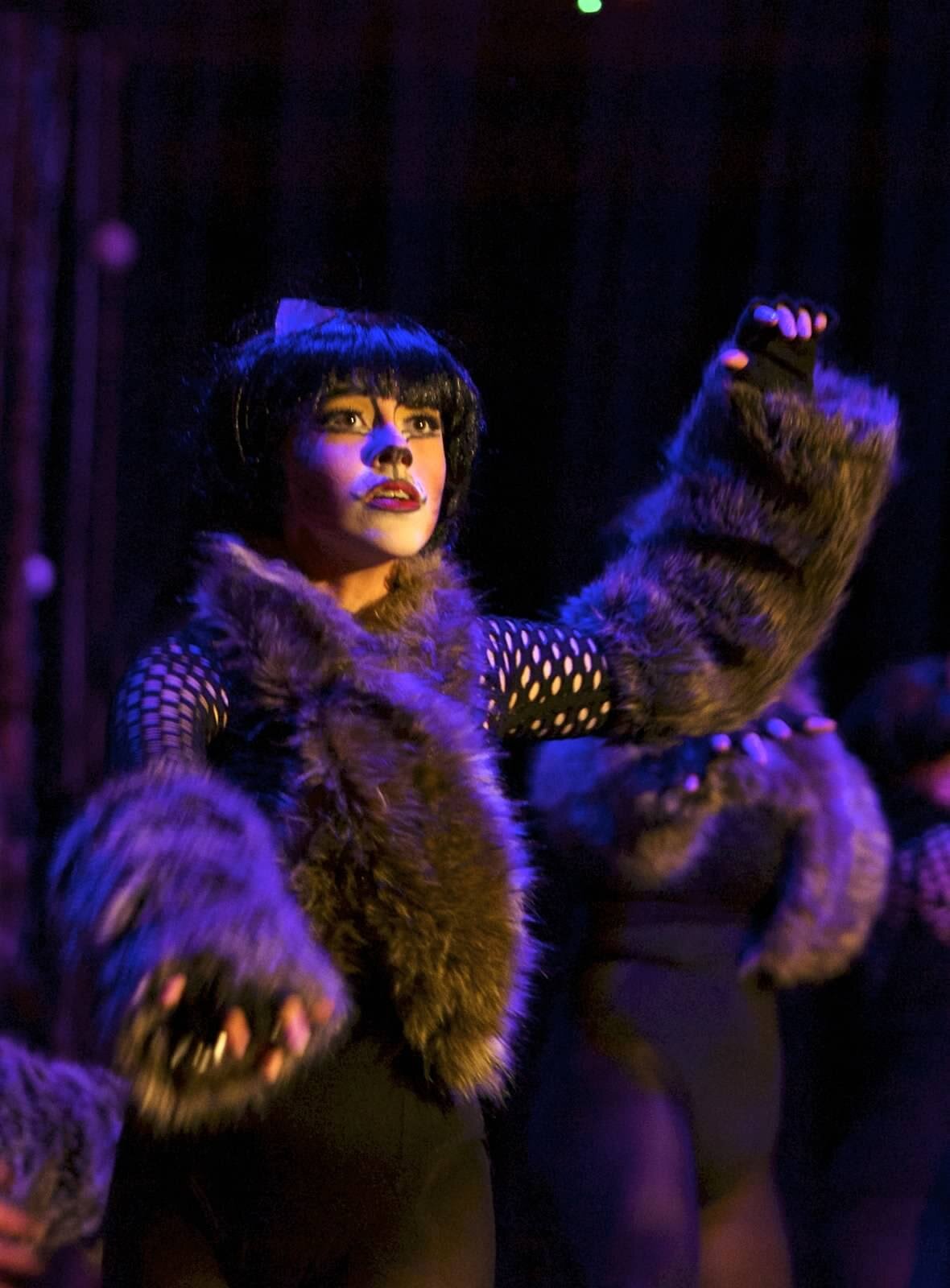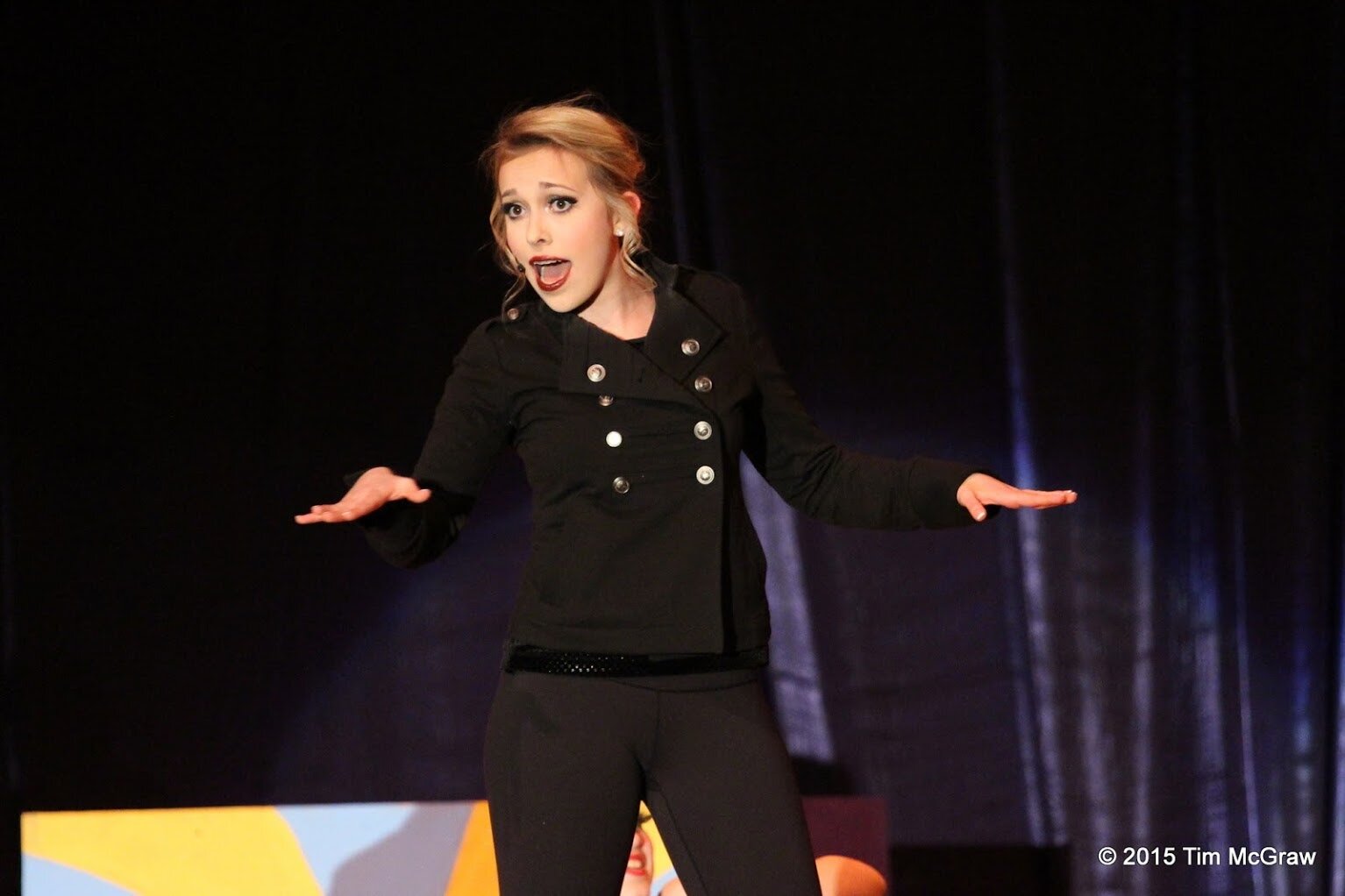A Life of Searching for Answers
My name is Cami Clune. I am a 20 year old singer, songwriter, and actress. You may know me from Season 19 of NBC’s “The Voice,” in which I placed in the semi-finals. On the surface, I may seem like a creative, energetic, overall healthy and happy person; however, there are some aspects about my life that you may not be able to guess by just taking a look at me. You may not believe me when I say that I have a chronic illness with which I have been struggling with my whole life. What may be even more shocking to you is that I was not diagnosed with this illness until I was 18 years old, and that is surprisingly a pretty young age to be diagnosed with this syndrome - considering the fact that you are born with it.
My health issues first emerged when I was just a toddler. Firstly came my gastrointestinal problems consisting of extreme abdominal pain, constipation, bloat, and food sensitivities. Not only that, but I was also very picky with my food choices due to another condition that I was diagnosed with as a child. In fact, it was not just my food choices that I was particular about.
At 4 years old, I was diagnosed with Sensory Processing Disorder. SPD is a condition that affects how one’s brain processes sensory information (stimuli - sight, sound, smell, taste, touch). The person affected by this condition can either be overly or under sensitive to certain stimuli, more or less than the average person is, (https://familydoctor.org/condition/sensory-processing-disorder-spd/). As with most conditions, the experience is different for everyone. For me, as a child I was hyper sensitive to what felt like everything around me. There is still much research that needs to be done with sensory conditions, because many people are unaware of / do not understand them. One of the main misconceptions is that SPD can only be diagnosed if it is accompanied by a diagnosis of autism, however SPD can also be a diagnosis on its own. SPD is considered to be a form of neurodiversity.
* Side note, which may come into the story later - When I was diagnosed, the occupational therapist also mentioned that I was abnormally“bendy,” and that I held my pencil, “strangely.” *
Living with SPD as a child was constantly overwhelming. I was immensely sensitive to everything around me. Certain sights, sounds, textures, and smells would trigger me into sensory meltdowns. For example, I wore ear muffs in noisy situations, couldn’t wear anything constricting, couldn’t stand certain smells and clothing textures, and would only eat a few foods. Every time my family would sing “happy birthday” to me, I would plug my ears and cry. I would react very strongly to pain. It felt as if I was living in a different world than everyone else around me - a world that felt too much for me to handle.
Because I was so particular with my foods, my doctors at the time primarily blamed my lack of variety in diet for my stomach issues. Everything I did revolved around my stomach and sensory needs. What was interesting is that no matter what I did - soccer, tee ball, playing with friends - I was always getting hurt. Because of SPD, I had intense reactions to the pain. So - the focus was always on, “why does she have such extreme reactions?” rather than, “why is she always getting hurt?”
Typical fun activities for children seemed to be painful and exhausting for me. A simple ride on a roller coaster would have me crying for hours. Even walking was a huge problem at times. I particularly remember going to Disney World around age 8 and having such extreme “growing pains” that I could not walk and was up all night with shooting pains in my legs. I could not articulate the pain that I was experiencing, and I thought that was just my “normal.” Being called “dramatic” “spoiled” and “lazy” by those who did not understand my situation was not uncommon.
By the age of 9, things were getting even worse for me. The abdominal pain and bloating was beginning to be too much to bear, and my mom especially was constantly trying to find answers. We could not seem to find answers with my primary doctors, and so my mom began diving into holistic health. She wanted to get me out of pain more than anything, and even more than that, she wanted to know WHY this was all happening. So - she started researching, reading everything she possibly could, and talking to everyone who would listen.
Then what seemed to be a miracle at the time happened. My mom began taking me to a functional medicine practitioner who - through lab work, diet, and supplementation was able to greatly improve my health problems in about 9 months. Everyone will tell you at that time, I seemed to be a “new” kid. I felt healthier and happier. Although I was already creative and involved in the arts before, I became even more passionate about it. I believe that could be attributed to the fact that I had so much more energy and was not constantly weighed down by pain. During this time, I even started my own charity called “Backyard Broadway” using dance performances (that eventually turned into musical performances) to raise money for other chronically ill kids!
Still - through all of this - I really did not have a primary diagnosis. All I knew is that I was feeling so much better. We knew that certain foods would make my stomach issues more severe, and that the supplements I was taking were working. I followed a strict no dairy, no gluten, no processed sugar, organic (as much as possible) diet. I was (and still am) fortunate and blessed enough to be able to have a family that was willing and able to support me through all of this. They would do anything to keep me healthy and happy no matter how much money or time it took. They sacrificed everything to support me and I am forever grateful for them.
By the age of 13, I was becoming more relaxed with my diet and supplements because I was feeling so much better. However, my body was also changing as I grew, and in time, things started getting bad again. The stomach problems were intensifying, the fatigue crept back up. I could not go to the bathroom for days...and days became weeks. What I also started to realize is that when my stomach got worse, so did my mental struggles. The two would often go hand in hand, and to this day, they still do. What really stood out at this time in my life was the increased physical pain and horrible anxiety. I still continued with activities, but I silently struggled.
A monumental moment of when my mom and I really took notice of the physical issues was when we were in Atlanta, GA at a musical theatre competition (shoutout to ATA and JTF!) and my shoulders kept popping out of joint and were causing a lot of pain. When I returned home, my doctors sent me to a physical therapist who said that my shoulder issues were simply caused by my heavy backpack. I had to have a second set of books at home and was told not to carry anything heavy. This was one of the first times that I noticed physical evidence of a joint problem.
Other indicators were that, as a dancer, I noticed my hips, arms, and knees would hyperextend - which sometimes can be looked at as a good thing in a dancer. However, when accompanied by consistent pain, it is never a good thing. I was also “bendy” even when playing the piano! Again, I was told that my fingers bent in an “interesting” way. My piano teacher always tried to make me “fix” them but they would just naturally return to bending rather than playing with the tips of my fingers.
So, I stopped carrying heavy things, did physical therapy, etc. but I was still in pain. Obviously it was not just the books. It was something deeper going on, and the constant strain on my body from dancing and theatre did not help. All while this was happening, my intestinal issues were getting much worse and I was suffering from severe anxiety and OCD (which I was also diagnosed with as a child. I know. By this point you must be thinking, how many problems can this girl have!? lol). At this time, I rarely felt good anymore. I was now in 8th grade and was beginning to miss a lot of school or would always be going in late. Mornings were the worst for me - they still are! I think I remember my mom saying they recorded me late 78 times. Thankfully, the school was very understanding that I was not feeling well.
My doctors at this point blamed everything on anxiety and stress. They basically said that it’s all in my head. By 9th grade, my daily activities became more intense and so did the pain. On top of school, theatre, and dance, I was pushing myself to exercise every day. I started to be interested in lifting weights and martial arts (krav maga) - little did I know that was exacerbating the problem. The pain became so bad - I literally thought I was dying. My digestive issues almost got to the point of hospitalization.
In 10th grade, a pain began that would haunt me for years. I do not remember the specific day it started, but I do remember that in the fall of that year I began to have a headache - every. single. day. It would begin in my neck and make its way all the way to my eyes. Nothing helped. Sitting made it worse, standing made it worse, exercising made it worse. All I wanted to do was lie down. It was to the point that I was convinced I had a brain tumor. My doctors told me it was simply migraines and anxiety. Turns out - in addition to my main diagnosis, I was also dealing with craniocervical instability and scoliosis! And yes - I did have anxiety! And yes - it was accelerated because I THOUGHT I WAS DYING! Still - I pushed through the pain and continued with my activities.
I was also still consistently struggling with stomach issues. Again, according to my doctors, it was “all related to my anxiety.” Specifically when I was telling one of them how previously restricting diet and supplements worked, they said it was unnecessary and I should “just eat pizza like a teenager does!” Later, tests from another doctor led to my diagnosis of celiac disease and a gut motility disorder.
By the way - this is NOT meant to bash any doctors out there. This is simply my experience with the doctors that I was treated by. There are many healthcare providers who seriously care and want to get to the bottom of why their patient isn’t feeling well. A main reason why I am writing this is because there are so many doctors that are not even aware of my syndrome, and so they do not know the tools on how to spot it, diagnose it, and address it.
Because my gut issues were undiagnosed for so long, I was suffering from secondary problems. I had developed something called SIBO/SIFO (Small intestinal bacterial and fungal overgrowth). I began showing symptoms of what mirrored Mast Cell Disorder (MCAS) and POTS. I was developing sensitivities to what felt like every single food. My gut issues were wreaking havoc on my entire body and mind.
In the thick of it all, the neck and head pain, stomach pain, stress, and anxiety together had gotten so bad, I actually started having issues with my vision. It was blurry and tunneled. Which again - my brain immediately went to “I have a brain tumor!” With no diagnosis, who wouldn’t constantly worry that something severe was happening? Eye doctors told me I simply needed stronger lenses and that I had allergies.
I then went to a developmental ophthalmologist that diagnosed me with “Streff Syndrome.” Streff Syndrome is an involuntary, juvenile amblyopia thought to be caused by near point stress. It is typically characterized by bilateral reduced acuity, near visual acuity poorer than distance visual acuity, with no significant refractive error or pathology,” https://www.aaopt.org/detail/knowledge-base-article/streff-syndrome-case-report). He also confirmed that my lenses were actually completely too strong. I began doing vision therapy to strengthen my eyes.
Also during this time, I switched high schools half way through my sophomore year. I was not unhappy with the school itself - in fact I hold it in very high regard and had some amazing teachers there. The reason I was so unhappy in the school that I was at was due to the fact that instead of enjoying my first couple years of high school, I had completely withdrawn and felt like I did not fit in due to everything that I was experiencing. In turn, I was feeling isolated, alone, and in need of a change. So - I switched schools, and even just that made my stress slightly better. I felt welcomed at my new school by not only the teachers but also the students. They were very understanding of all of my health issues and greeted me with open arms.
Then, during the summer before my junior year of high school, I really started to try and work on doing whatever I could to make myself feel better. Because I wasn’t in school or theatre on my summer break, I had the time for self care. I really tried to decrease my stress and not overwork my body. Every day I would wake up, do my vision therapy, meditate, do yoga, and eat as healthy as I could. My vision became so much better, and so did the pain and anxiety.
As you can see, there was so much happening all at once. I was so frightened and completely exhausted. Not understanding the reason or how to cope with my undiagnosed pain definitely caused my mental health to deteriorate in addition to my physical health. The whole experience was causing me to develop increasing anxiety and depression. When nobody can visibly see that something is wrong, a lot of the time they don’t believe you.
While I was feeling better in the summer, once school started up in the fall I was experiencing issues once again. At the time, I remember my primary pain being in my lower abdomen. It felt like I was constantly carrying a heavy weight there, and nothing made it go away. I also had flare ups on my skin. This was the result of SIBO/SIFO acting up. In addition to this, I was always fatigued. Simple tasks would make me feel completely exhausted. Dance and theatre would exacerbate it and I honestly could not handle the physical and mental stress that my issues were causing me anymore. Because of the pain I was in, I decided to give up my passion at the time, which was musical theatre. When I made that decision, I felt like I had lost my entire identity. Musical theatre was my life, and it was gone. It was not until I slowed down with my extracurricular activities and started to focus on truly practicing self-care, while consulting with doctors who would listen, that I finally got answers and started to improve my health.
Finally, in the spring of my senior year of high school (2018) I got a diagnosis - “Ehlers Danlos Syndrome - Hypermobility Type.” My functional medicine doctor, physical therapist, and neurologist all confirmed it. I was a 9 out of 9 on the Beighton Scale (https://www.ehlers-danlos.com/assessing-joint-hypermobility/). There is no genetic test for my type of EDS (there are 13 types), and so it is very important that there is funding towards research on finding a gene, (more information for how to donate below). While you may think it is just a diagnosis, it was EVERYTHING to me. It was the answer to my years of struggle. It allowed me to finally understand WHY. It allowed me to figure out what I could do to manage it all.
While there is no cure for EDS, there are ways to manage the pain - and that is different for everyone. That is why we are called “Zebras” - nobody’s stripes are alike. What I found is the things that I did in years past to manage the pain is what worked. Basically, I need to focus on living a healthy lifestyle more than any average person would. Over the years, I have learned what helps and what hurts me, and my doctors’ diagnosis finally gave me the validation that I needed. It confirmed that I was not merely imagining my pain. While there are many specifics on what helps me, overall, when I eat clean, do light exercise, and take the supplements that I need to take, I feel my best.
While I was taking a break from musical theatre, I found myself with a lot of time on my hands. What truly got me through that difficult time in my life was discovering a whole new world of music. When I say musical theatre was my entire life - I mean it. Broadway music covered about 80% of my playlist. When I was not able to be involved in the productions myself, I started to find it difficult to listen to. Quite honestly, it made me sad and reminded me of losing what I love the most. Discovering new genres of music to listen to and sing was a huge factor that truly got me through the roughest time of my life. It was my escape.
Another discovery of mine was not only did I love the stage, I also really loved film. During this time, I got into screen acting. My favorite project was “Blink of an Eye” - a film shedding light on the opioid epidemic. I played the lead girl as well as sang the title track.
I am 20 now. All my life, my family and I had to dig really deep for answers. My hope is that others can find the help they need earlier than I did. That is why, when I was asked to share my life story on The Voice, I chose to talk about EDS. I did not expect the overwhelming support that I received from the chronic illness community. For that, I am so beyond thankful. If I could give any advice to people suffering from unexplained health problems, it would be to be your own best health advocate. Follow your gut, do research, find people and doctors that will listen when you say that you’re hurting. Most importantly, don’t give up! You are not alone.
If I could say anything to doctors and healthcare providers, it would be to listen to your patients, think outside of the box, and find out WHY something is happening rather than just “applying a bandaid.” And please PLEASE don’t tell a patient, “it’s all in their head.”
May is Ehlers Danlos Syndrome Awareness Month (yes, I know I’m a bit late lol), and I’m sharing #MyEDSStory to shed light on the reality of invisible, chronic diseases. Just because someone doesn’t look “sick” doesn’t mean that they too are not dealing with silent struggles. To celebrate this month, I’m asking you to consider donating to organizations who are actively doing or funding EDS (and other co-morbidities) research:
HOW YOU CAN SUPPORT
Share our stories! Follow our social media!
(@’s listed below are Instagram Profiles)
You can also make a donation to:
The Ehlers Danlos Society (@Ehlers.Danlos) - The Ehlers-Danlos Society is a global community of individuals, caregivers, healthcare professionals, and supporters, dedicated to saving and improving the lives of those affected by the Ehlers-Danlos syndromes (EDS), hypermobility spectrum disorders (HSD), and related conditions. Donations to The Ehlers-Danlos Society are critical to our continued ability to raise awareness and visibility of EDS and HSD among the general public. https://www.ehlers-danlos.com/giving/
The Norris Lab at Medical University of South Carolina - The Norris Lab specializes in Hypermobile EDS (hEDS) research and recently identified a very strong candidate gene for hEDS. To donate directly to this lab, click donate and select “EDS research in Regenerative Medicine.” https://connect2.musc.edu/com
Dysautonomia Support Network (@dyssupport) - DSN is a U.S. based non-profit whose mission is to provide a community that empowers and supports those affected by dysautonomia (a common comorbidity to EDS) to live their best lives. https://www.dysautonomiasupport.org/
Dysautonomia International (@dysautonomiaintl) - Dysautonomia International is a non-profit that seeks to improve the lives of individuals living with autonomic nervous system disorders through research, physician education, public awareness and patient empowerment programs. http://www.dysautonomiainternational.org/
Mast Cell Action - MCA’s mission is to lobby for universal awareness, diagnosis and treatment of MCAS, provide support for MCAS patients and their families, support doctors and researchers with an interest in MCAS, persuade the medical community that, by recognizing Mast Cell Activation Syndrome, there will be a huge opportunity for the much more effective use of resources within the medical system, and to bring the Mast Cell Activation Syndrome patient community together and create a cohesive voice. https://www.mastcellaction.org/
Bobby Jones Chiari & Syringomyelia Foundation, Bobby Jones CSF (@bobbyjonescsf) - Their mission is to advance knowledge through research and to educate the medical, allied sciences and lay community about Chiari malformation, syringomyelia and related disorders. A Chiari malformation (CM) is an abnormality in which the back compartment of the skull is too small for its contents, resulting in crowding of the neurological tissues. Many EDS patients are also diagnosed with this. https://bobbyjonescsf.org/
Conquer Chiari (@conquerchiari) - The C&S Patient Education Foundation is a 501(c)(3) non-profit organization dedicated to improving the experiences and outcomes of Chiari and syringomyelia patients through education, awareness, and research. https://www.conquerchiari.org/index.asp
Sofia’s Helping Hand (@sofiashelpinghand) - This organization was created by 13 year old Sofia who lives with EDS. Her mission is to help as many children as possible that are dealing with a difficult diagnosis. The beginning of the organization’s journey will start with children that have some of the same complications and disorders as Sofia. https://www.sofiashelpinghand.com/ { Side note to Sofia - I absolutely love that you created an organization to help other kids like you! It reminds me of the organization that I started when I was younger called “Backyard Broadway,” that had a similar mission. Keep going! :) }














